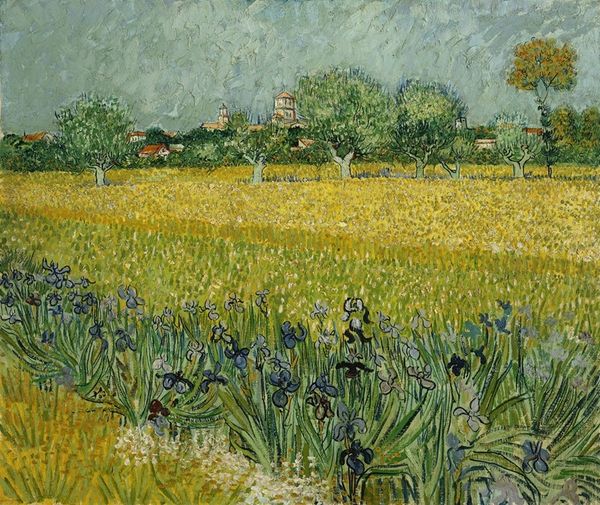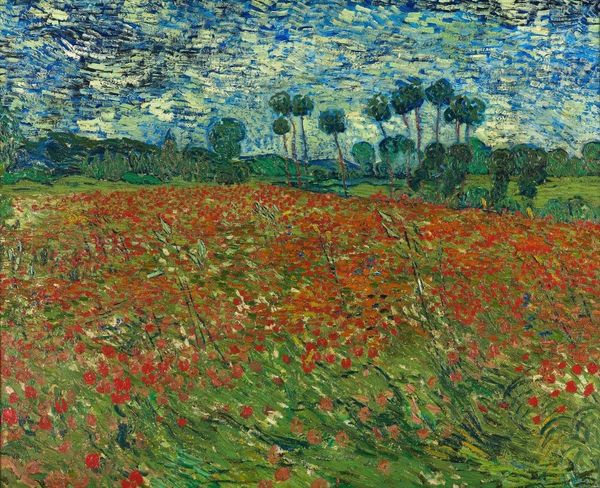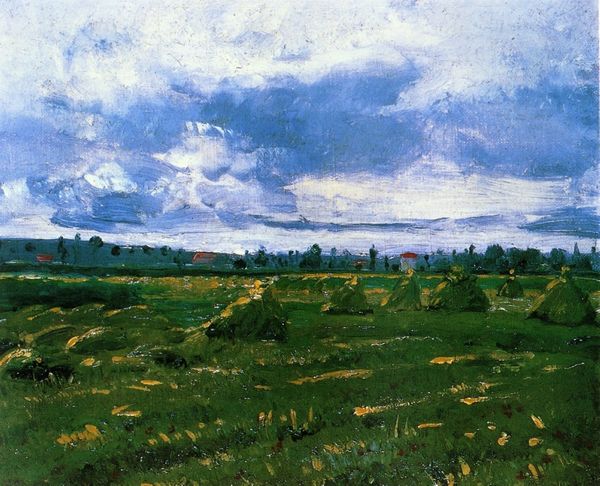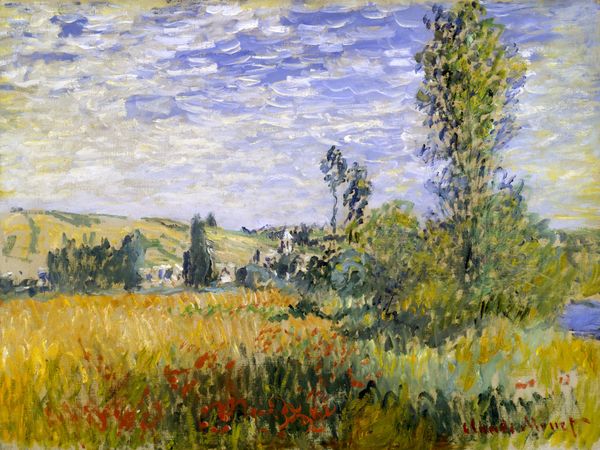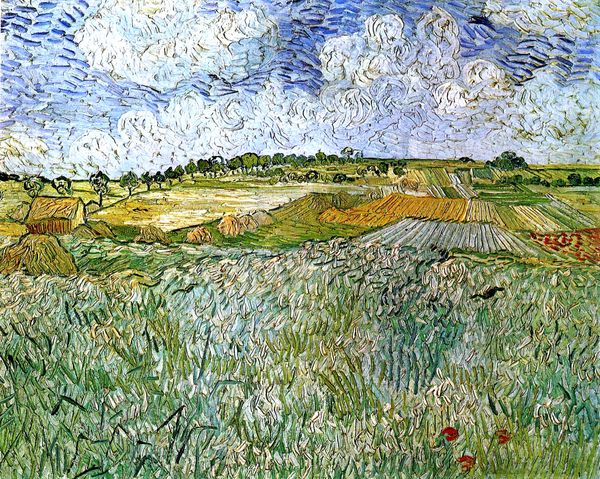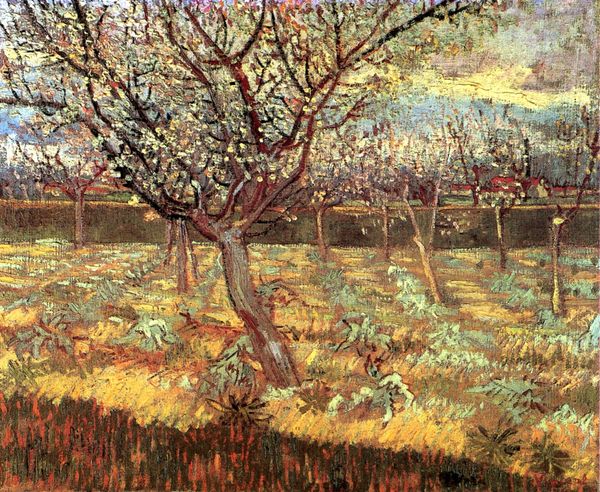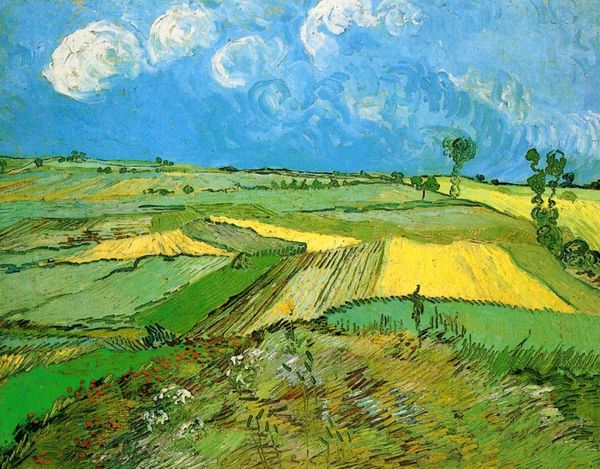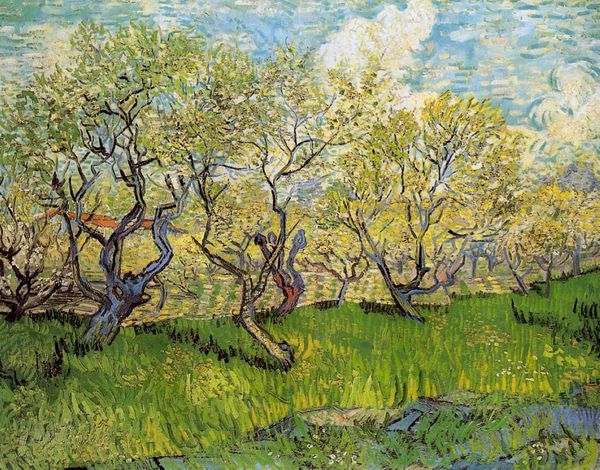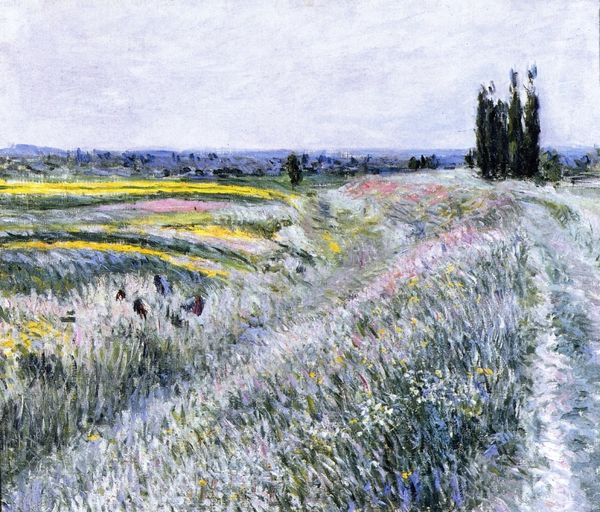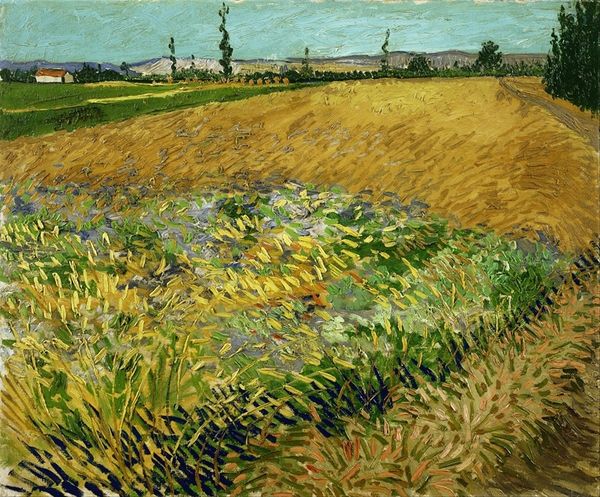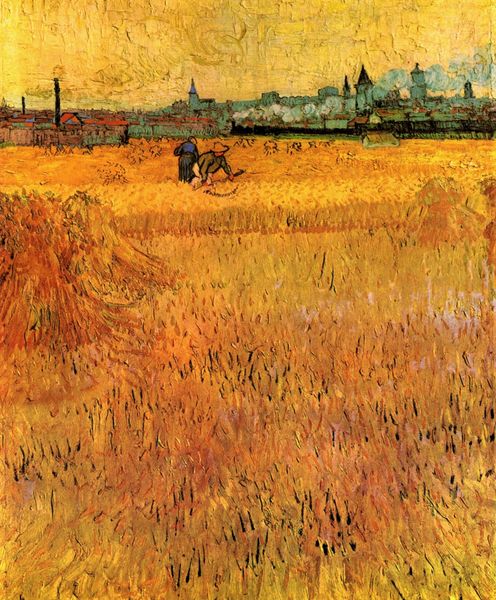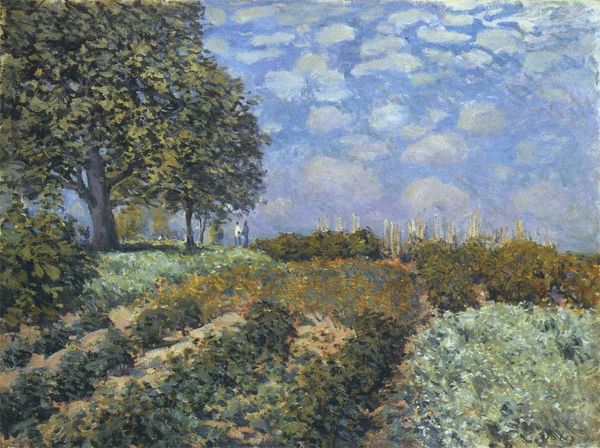
plein-air, oil-paint
#
sky
#
plein-air
#
oil-paint
#
landscape
#
figuration
#
post-impressionism
#
realism
Dimensions: 92 x 72 cm
Copyright: Public domain
Curator: Welcome. We are looking at Van Gogh's "The Green Vineyard," an oil on canvas he painted in 1888, while residing in Arles. This piece is currently housed at the Kröller-Müller Museum in Otterlo. Editor: My immediate impression is one of orchestrated chaos. The brushstrokes seem almost violently applied, yet there's an underlying sense of harmony created through the color palette. It feels very much about the materiality of the paint itself. Curator: Yes, the heavy impasto is striking, especially given that he adopted a plein-air approach. Note how the vineyard isn't simply green, it’s a mosaic of yellow, green, and even blues, symbolizing the vibrancy of life and perhaps a yearning for renewal. The figures within add an important layer; they’re harvesting grapes, which, historically, represents abundance and prosperity, often tied to religious or communal feasts. Editor: I'm intrigued by the use of line—or lack thereof, in certain areas. Van Gogh almost sculpts with paint, blurring distinctions between forms. The sky, for example, mirrors the earth below in texture and colour. This flattening creates a dynamic tension across the picture plane. Is he collapsing hierarchies of subject/ground, form/void? Curator: I think you’re right, it’s as if the physical and the spiritual realms become interwoven here, both materially and symbolically. Consider the intense blues alongside the vibrant yellows; blue has been a constant symbol of hope or heaven across cultures. Yellow, conversely, is related to intellect but can also signify decay or madness when it is in excess. He creates a balance. Editor: Do you think we read the yellow as decay or madness in this context, though? For me, it feels like it enhances the luminosity. Almost a golden-hour effect captured permanently in the paint. It seems that form precedes iconography. The swirling rhythm is less a depiction of nature, and more an exercise of mark making. Curator: I find your view interesting, and the golden-hour notion carries significant light. Overall, there's definitely an energetic tension between the tangible process of labor and a higher, perhaps more optimistic, reading of nature's symbolism, wouldn’t you say? Editor: Indeed. Van Gogh continues to confound our desire to simply name or categorize. Thank you for shedding some light on the visual tensions, and iconic dimensions of the scene.
Comments
No comments
Be the first to comment and join the conversation on the ultimate creative platform.
